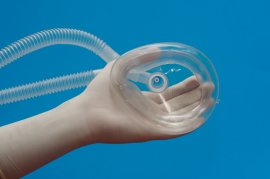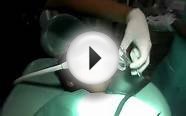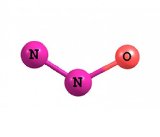Nitrous oxide inhalation
 Nitrous oxide, often called “laughing gas, ” was discovered in the late 1700s. It was originally used to relieve pain during dental surgery. Today, it is widely used for labor pain in the United Kingdom, Finland, Sweden, Canada, Australia, and New Zealand. Its use in the relief of labor pain is also gaining popularity in the United States. It is considered to be generally safe for both the mother and her baby.
Nitrous oxide, often called “laughing gas, ” was discovered in the late 1700s. It was originally used to relieve pain during dental surgery. Today, it is widely used for labor pain in the United Kingdom, Finland, Sweden, Canada, Australia, and New Zealand. Its use in the relief of labor pain is also gaining popularity in the United States. It is considered to be generally safe for both the mother and her baby.
At Brigham and Women’s Hospital, we began offering nitrous oxide as an option for labor pain relief in August 2014. Though many of our patients who use nitrous oxide still request an epidural anesthetic as their labor progresses, a large number experience significant pain relief without an epidural. These women have found that nitrous oxide, when used alone or in combination with other non-medical pain relief options, such as hydrotherapy, supportive care, or relaxation techniques, are able to achieve their goal of a comfortable childbirth.
What to Expect
Nitrous oxide provides rapid pain relief, but its effects are short-lived. Our patients report that nitrous oxide does not completely relieve their pain, but creates a diminished perception of the pain. Up to one-third of women may not experience pain relief with nitrous oxide use.
During labor, nitrous oxide is administered as a gas mixture (50 percent nitrous oxide, 50 percent oxygen) through a mask or mouthpiece. The patient places the mask over her nose and mouth or places the mouthpiece in her mouth. As the patient inhales, a valve opens, releasing the nitrous oxide gas mixture. When the patient exhales, the valve closes and the flow of nitrous oxide stops. A patient must be alert and awake to be able to self-administer the nitrous oxide. Nitrous oxide can be used throughout the various stages of a woman’s labor.
The main side effects of nitrous oxide inhalation are nausea, vomiting, dizziness, and drowsiness. However, the nitrous oxide concentration used for labor is lower than that used for other procedures and results in fewer side effects. Patients report that they like being able to control how much and when they use the nitrous, rather than have it administered to them.
You might also like



|
Nitrous Oxide Molecular Structure Isolated on White Peel and Stick Fabric Wall Sticker by Wallmonkeys Wall Decals - 24 Inches W x 21 Inches H Home (Wallmonkeys)
|





